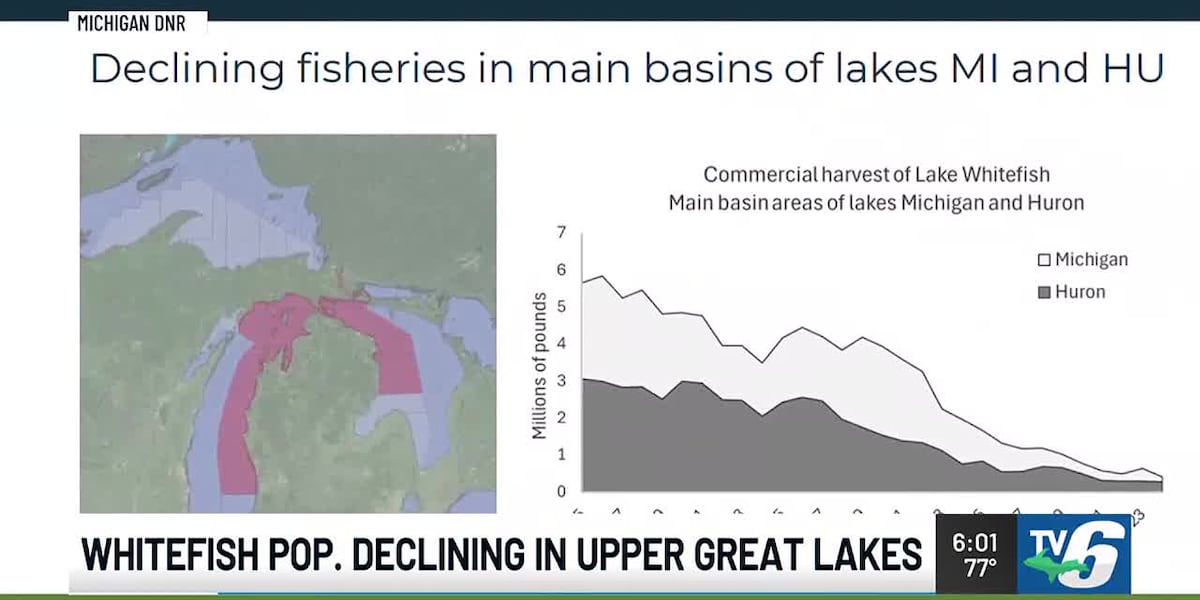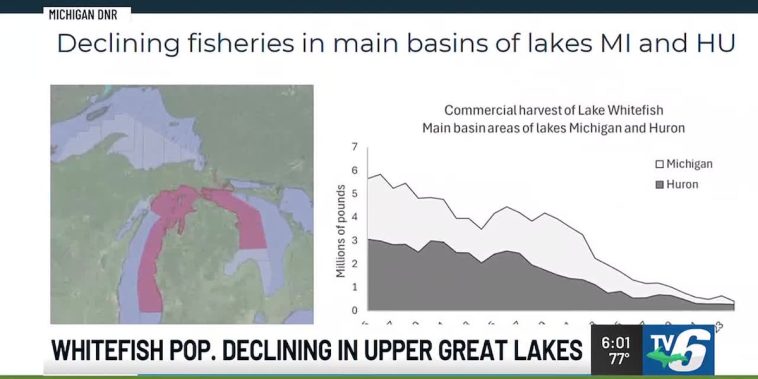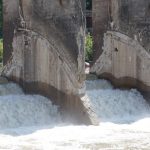

Whitefish Decline in the Upper Great Lakes: A Crisis Affecting Economy and Culture
Over the past few years, it has become increasingly clear that the whitefish population in the upper Great Lakes is facing a significant decline. As an avid follower of our region’s environmental health and local economies, I find this trend both concerning and a call to action for our communities. The gradual reduction from over five million pounds to a mere 500,000 pounds in Lakes Michigan and Huron over the last three decades not only poses challenges for the ecosystem but also affects our shared cultural and economic heritage.
This opinion piece aims to examine the tricky parts of the issue and offer some insights into potential ways forward. We will take a closer look at the factors contributing to the population decline, the role of invasive species, and what this phenomenon means for local cultures and economies. In doing so, we hope to stimulate an open dialogue that is both informative and constructive.
Examining the Troubling Decline: A Closer Look at Whitefish Populations
One of the most confusing bits about the whitefish decline is understanding the nature of its decline and its causes. According to data presented by the Michigan Natural Resources Commission (NRC), the decline in whitefish populations has far-reaching implications, both ecologically and economically. Several experts have weighed in on this subject, identifying the perturbations in the food web as a primary driver behind the collapse of the whitefish numbers.
Historically, whitefish have thrived in the upper lakes, not only as a natural resource but also as a foundation for local traditions. It is important to recognize that this decline is not merely about fish numbers; it touches upon the delicate balance of our freshwater ecosystems and the intricate ways in which nature supports human livelihoods.
Long-Term Impact on Local Economies and Cultural Heritage
The problematic decline in whitefish affects more than just the ecosystem. Local communities, whose economies and cultural identities are deeply intertwined with the health of the lakes, find themselves facing significant economic turbulence. For many, the fishing industry is not just a source of income but a pillar of regional tradition.
Below is a table that contrasts historical numbers with recent findings, underscoring the dramatic change over the decades:
| Decade | Estimated Whitefish Harvest (in pounds) |
|---|---|
| 30 Years Ago | More than 5,000,000 |
| Today | Approximately 500,000 |
This stark reduction has multiple side effects. It not only disrupts the food web but also affects recreational fishing, hospitality industries, and other small businesses that depend on a healthy aquatic ecosystem.
Community Voices: Local Opinions on a Declining Resource
The local populace has many opinions on this issue. Some see it as an unstoppable natural process, while others argue that human influence through industrial activities and invasive species introductions has amplified the problem. Here are some of the common viewpoints expressed by community members:
- Cultural loss: The decline is echoing the loss of local traditions and culinary practices that have been handed down for generations.
- Economic stress: Many small businesses connected to fishing and tourism are experiencing nerve-racking challenges in adapting to reduced fishing yields.
- Ecosystem imbalance: The decline represents a tangled issue where the disappearance of one species sends ripples throughout the entire ecosystem.
Understanding the Underlying Causes: The Role of Invasive Species
Diving in to get into the reasons behind this collapse, one of the primary culprits appears to be the invasive quagga mussels. These mussels, uninvited guests in our lakes, have been identified by experts as causing major interruptions in the whitefish food chain. They alter the composition of the water and disrupt the bacteria that whitefish have historically relied upon for energy during adulthood.
As Stephen Lenart, Manager of the Tribal Coordination Unit for the DNR Fisheries Division, aptly put it, the bacteria that the whitefish have depended on for their adult life—essential for energy—have been disturbed by the actions of these mussels. This is the place where we have seen the most perturbation in this food web, a concept that might seem complicated but essentially points to the small, yet critical, details that keep our ecosystems in balance.
How Quagga Mussels Undermine the Ecosystem
Quagga mussels have woven themselves into the fabric of our lakes with a speed that has left many community members off-put and experts concerned. Their impact is mostly seen as a classic example of bottom-up effects where the smallest organisms, the fine details of the ecosystem, are the ones that bear the brunt of the invasive impact. Below are the small distinctions that highlight how these mussels are affecting the whitefish:
- Bacteria Disruption: The mussels interfere with bacteria that are pivotal in providing whitefish with energy, undermining the fish’s ability to thrive.
- Food Chain Impact: They impact the microscopic organisms at the bottom of the food chain, effectively throwing off the natural balance that supports the majority of life in the lakes.
- Reproductive Challenges: With the base of the food web under stress, whitefish reproduction faces additional hurdles, further exacerbating population declines.
Dave Caroffino, the DNR Fisheries Lake Superior Basin Coordinator, explained the situation by breaking down the impact into two levels: a top-down effect from predators like lamprey and a bottom-up influence from quagga mussels. The mussels’ impact on the smallest organisms—the fine points of the ecosystem—is the subtle yet essential driver behind the ongoing decline.
Comparing Lake Superior to Lakes Michigan and Huron
One might ask if this issue is uniform across all the Great Lakes. Interestingly, Lake Superior seems to be faring better than its counterparts, primarily due to its unique geological makeup. The geological conditions in Lake Superior create an environment where the calcium levels are lower, which in turn makes it difficult for the mussels to sustain their shell growth. This means that in many parts of Lake Superior, the nuisance of invasive mussels is less overwhelming.
In contrast, the conditions in Lakes Michigan and Huron have proven more accommodating for the quagga mussels. With the necessary resources in abundance, the mussels have been able to establish themselves vigorously, thereby amplifying their negative impacts on the whitefish populations.
Exploring the Economic and Social Consequences
The decline in whitefish is not an isolated ecological issue—it is deeply connected to the economic and social fabric of the Upper Great Lakes region. Local businesses, from small fishing enterprises to community-based restaurants, rely heavily on the steady supply of whitefish. When these numbers dwindle, it sets off a chain reaction that ripples across the economy.
There are several ways in which this economic downturn manifests:
- Loss of employment: Fewer fish means fewer jobs, particularly in communities where commercial and recreational fishing is a mainstay.
- Decline in tourism: A healthy fish population draws sportfishing enthusiasts, and its rapid decline can make the destination less attractive.
- Impact on local cuisine: Many local chefs and restaurants pride themselves on dishes prepared using local whitefish. Reduced fish supplies directly affect culinary traditions and the availability of regional specialties.
- Economic ripple effects: The diminishing whitefish population can lead to broader economic challenges, from reduced consumer spending to a decrease in community investments.
Thoughts on Reinstating Year-Round Coyote Hunting
While the whitefish issue looms large, another subject that came under discussion in the recent NRC meeting was whether to reinstate a year-round coyote hunting season. This proposal echoes broader debates about wildlife management and ecosystem balance in the area. Proponents argue that an expanded hunting season can help control coyote populations, which in turn could lead to a more balanced food web. On the other hand, critics worry about potential unforeseen impacts on other species.
This debate is a classic example of the tangled issues that arise when human intervention intersects with natural ecosystems. Whether the extension of the coyote hunting season will provide a sustainable solution or create additional imbalances remains to be seen. What is clear is that any decision in this regard must be taken after careful thought, evaluation, and input from various stakeholders including local residents, ecologists, and wildlife experts.
Addressing the Challenges: Gathering Data and Looking Ahead
One of the most urgent needs expressed by the DNR is to keep gathering more information about the various parts of the whitefish food web. Simply put, a more comprehensive look at the elusive, fine parts of the ecosystem is needed in order to make informed decisions about management and conservation efforts.
It is evident that solving this issue involves more than just looking at the fish themselves—it requires a deeper, often nerve-racking, dive into understanding every component of the ecosystem. Here are some of the key areas that need closer scrutiny:
- Food Chain Analysis: Developing a detailed picture of how invasive species, like the quagga mussels, interact with native species.
- Water Quality Studies: Regular monitoring of water quality to understand changes that could be affecting the bacteria whitefish rely on.
- Cultural Impact Studies: Documenting how the decline in whitefish affects local traditions, culinary practices, and economic structures.
- Sustainable Practices: Investigating sustainable fishing practices and potential alternatives to mitigate economic losses.
By putting more focus on collecting and analyzing such fine details, the DNR hopes to shed light on the extensive interplay of factors that are contributing to the decline. Only with this expanded data can local regulators and the community figure a path out of the current predicament.
Strategies for Bolstering Ecosystem Health
It is necessary to outline and discuss potential strategies for mitigating this environmental and economic challenge. Effective management strategies could include the following actions:
- Enhanced Monitoring: Setting up comprehensive, routine monitoring programs to track changes in water quality, invasive species spread, and fish populations.
- Public Awareness Campaigns: Educating local residents, fishermen, and tourists about the delicate balance of the Great Lakes’ ecosystem and what can be done to support it.
- Research Initiatives: Funding research projects that examine the food web in detail, particularly the subtle interactions between invasive mussels and native species.
- Adaptive Management Practices: Employing flexible management strategies that can adjust based on real-time data and community feedback, ensuring that policies remain effective as the situation evolves.
The key here is collaborative action—public agencies, environmental scientists, local communities, and even recreational hunters must come together to work through these complicated pieces. The challenge is off-putting, but with a systematic, fact-based approach, there is hope for a turnaround.
Balancing Human Interests and Ecological Health
At the heart of the discussion surrounding the whitefish decline is the need to strike a balance between human interests and ecological sustainability. Our region’s cultural identity and economic prosperity have long been interwoven with the health of the Great Lakes. Therefore, it is critical that any environmental management strategy ensures that both nature and people benefit.
Finding your path through this complex issue involves weighing the immediate economic needs against the long-term benefits of maintaining a balanced ecosystem. For many local residents, the debate is not just about numbers or water quality—it is about preserving a way of life that has been nurtured over generations.
The Human Connection to Whitefish
When discussing the decline of whitefish, it is necessary to acknowledge its broader cultural implications. For many in Upper Michigan and the surrounding regions, whitefish are more than just a commodity; they represent a storied tradition of sustainable living, fishing lore, and community gatherings. The local fish houses, like the well-known Thill & Sons in Marquette, serve as hubs of tradition where recipes, techniques, and folklore are passed from one generation to the next.
It is worth considering how the reduction of a species so closely tied to cultural heritage affects the social fabric of the region. The decline not only diminishes the local economy but also strips away part of the community’s identity and history, leaving an irreplaceable void that cannot be measured solely in economic terms.
Community Initiatives and Policy Considerations
The state and local governments are now being called upon to take a proactive role in addressing this environmental challenge. Policy changes, increased funding for research, and the adoption of sustainable fishing practices are being discussed as potential solutions. However, it is clear that implementing these measures requires not only political will but also a cooperative spirit within all affected communities.
An opinion shared among community leaders is that local policy should reflect the intertwined nature of economic viability and environmental health. For example, moderating coyote hunting along with instituting measured conservation strategies for aquatic life could help manage both terrestrial and aquatic ecosystems more effectively. The upcoming NRC vote on issues like the year-round coyote hunting season is a reminder that our decisions must consider the complete picture.
Policy Options for a Healthier Future
To ensure that both ecological and human needs are met, local decision makers could consider adopting the following policy options:
- Regular Ecological Assessments: Mandate periodic assessments that involve scientists, local fishermen, and policy experts to gauge the health of the food web.
- Incentives for Sustainable Practices: Provide financial and logistical support to small businesses and fishing communities that adopt conservation-friendly practices.
- Comprehensive Data Collection: Invest in modern techniques and technologies that can offer real-time insights into water quality, invasive species spread, and fish reproduction patterns.
- Community Engagement: Hold regular town hall meetings and educational forums that allow residents to become active participants in crafting local environmental policy.
Every policy option needs to be thoroughly evaluated for its potential ripple effects, ensuring that while it seeks to address immediate issues, it does not inadvertently contribute to other twisted, nerve-racking challenges. Only with a careful balance between human and environmental needs can we hope to revitalize both our economies and our cherished natural habitats.
Looking Ahead: Hope, Challenges, and a Call to Action
While the current state of whitefish populations in the Great Lakes is undeniably worrisome, it is important to remain hopeful and proactive. The situation, though complex, is not beyond repair. With coordinated efforts to gather detailed environmental data, implement community-driven policies, and manage invasive species, there is a pathway forward that can restore balance to the region’s ecosystems.
It is essential that all stakeholders—from governmental agencies and local communities to scholars and environmental advocates—work together to figure a path through these tangled issues. Each step forward, no matter how small, plays a role in rebuilding a balanced ecosystem where both nature and local economies can thrive.
Community Engagement: Building a Sustainable Future Together
The future of whitefish in the Upper Great Lakes depends largely on our collective will to act. Here are a few ways community members can get involved:
- Participate in Local Forums: Join town hall meetings and public discussions where the health of the lakes is a primary agenda item. Listening carefully and voicing your views will help ensure that decision makers take local concerns into account.
- Support Local Businesses: Frequent local fish houses and restaurants that highlight traditional whitefish recipes. Your support not only sustains local culture but also creates a market incentive for responsible fishing practices.
- Engage in Citizen Science: Volunteer for local environmental monitoring projects. Many organizations welcome community volunteers to assist with data collection and analysis.
- Advocate for Sustainable Policies: Write to local representatives, join advocacy groups, and use your social media platforms to raise awareness about the need for sustainable practices and robust environmental policies.
By working together, we can define new strategies that are both practical and community-centered. This is not merely an environmental issue, but also a societal one—a challenge that touches every aspect of life in our cherished region.
The Road Forward: Combined Efforts and Innovative Solutions
Looking forward, it is clear that our approach needs to be both multi-faceted and adaptive. Innovations in environmental monitoring, deeper community engagement, and collaborative policy-making are all methods that can help reverse the current trends impacting whitefish populations. Here are some key steps that could forge a brighter future:
- Integrated Management Plans: Develop comprehensive regional plans that include input from environmental experts, economic developers, and local community leaders.
- Enhanced Research Funding: Secure more funding for scientific studies focusing on the fine details of the food web, invasive species impacts, and the effectiveness of various intervention strategies.
- Collaborative Conservation Efforts: Create partnerships between governmental agencies, local universities, and environmental organizations to share data and develop actionable insights.
- Public-Private Initiatives: Encourage private investment in sustainable technologies and practices that support the health of the lakes while boosting local economies.
These measures are not quick fixes, but they are essential steps along the road to recovery. By taking the time to understand every subtle twist in the ecosystem and respecting the interconnectedness of environmental and human factors, we can lay the foundation for a future where whitefish once again thrive in our lakes.
Final Thoughts: Balancing Conservation and Community
In wrapping up this discussion, it is important to note that the challenges faced by the whitefish population in the Upper Great Lakes serve as a reminder of the delicate bond between nature and human communities. The steep decline in fish numbers is deeply entwined with economic stress, cultural shifts, and environmental instability. What we need now is a collective effort to steer through this maze of issues—an effort that requires both scientific insight and local wisdom.
There is no magic bullet for solving these complicated pieces of our ecosystem, but through dedicated research, community involvement, and adaptive policymaking, we can begin to mend the broken links in the food web. While the invasive quagga mussels have undeniably altered the landscape, our response to these changes—powered by a passion for conservation and a commitment to preserving local traditions—can make a significant difference.
Our region deserves an environment that nurtures both economic prosperity and the cultural heritage of its inhabitants. By staying informed, getting involved, and advocating for balanced policies, every one of us can play a part in ensuring that the story of the whitefish is not one of decline, but of revival and sustainable growth.
A Call to Action for Environmental Stewardship
The time to act is now. As community members, policymakers, and environmental stewards, we must each take responsibility for nurturing the delicate ecosystem provided by the Great Lakes. Our shared future depends on the choices we make today—choices that recognize the intertwined fate of nature and society.
Let us not allow short-sighted decisions or unfounded fears to dictate the destiny of our natural resources. Instead, let us commit to an approach steeped in collaboration, rigorous science, and a deep respect for the traditions that have long defined our region. Together, we can find our way through these overwhelming challenges and ensure that future generations have the opportunity to experience the rich cultural legacy and natural bounty of the Upper Great Lakes.
In conclusion, the decline of whitefish is more than just an environmental setback—it is a call for community resilience, enhanced research, and united action. By embracing a future that honors both our natural world and our cultural legacy, we have the opportunity to effect meaningful change. The road ahead may be riddled with problems and off-put challenges, but with the collective will and detailed efforts, a revival is within reach.
All in all, as we work through the tangled issues of the whitefish decline and examine every little twist and turn, we must seize the moment to rebuild a balanced and thriving ecosystem. The fate of the whitefish, and by extension, the communities they support, lies in our hands.
Originally Post From https://www.uppermichiganssource.com/2025/07/10/whitefish-population-declining-by-millions-pounds-upper-great-lakes/
Read more about this topic at
‘We can’t regulate ourselves’ out of whitefish crisis, experts …
Great Lakes whitefish populations could soon disappear …


